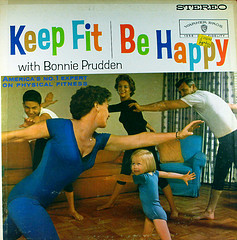 There’s an amazing, FREE treatment that you MUST know about. It can improve pain levels, mood, circulation, sugar levels, sleep, energy levels, blood pressure, bone density, cholesterol, and brain function. That’s fantastic! Stiff joints? Back pain? Depressed? No problem! It can also help you keep a healthy weight, melting the inches and pounds away. Helloooo skinny jeans. Does this sound great or what?! Afraid you may fall and not be able to get back up? No worries… you’ll feel more balanced, stronger, and limber. But wait, there’s more! If you act now, you can expect improved strength, endurance, and flexibility for all your daily activities.
There’s an amazing, FREE treatment that you MUST know about. It can improve pain levels, mood, circulation, sugar levels, sleep, energy levels, blood pressure, bone density, cholesterol, and brain function. That’s fantastic! Stiff joints? Back pain? Depressed? No problem! It can also help you keep a healthy weight, melting the inches and pounds away. Helloooo skinny jeans. Does this sound great or what?! Afraid you may fall and not be able to get back up? No worries… you’ll feel more balanced, stronger, and limber. But wait, there’s more! If you act now, you can expect improved strength, endurance, and flexibility for all your daily activities.
So what’s the name of this magic drug? Purplpilatorfosimariceptaxilase? No, silly! It’s exercise. This amazing drug is available in either name-brand (gym memberships, ski equipment, top of the line bike) or generic (increasing steps per day, hiking at the park, home exercises) forms. Either is effective and preventive, but just make sure you get at least 30 minutes per day of moderate intensity exercise, 5 days per week. You can even break it down into as little as 10 minute installments. So what are you doing sitting there in front of the computer? For this unlimited free offer you should act now, don’t delay! Improved health is right around the corner, with exercise. 🙂
OK, so it sounds a little too good to be true, right? Actually, there is an immense amount of research to back up these claims. Of course, yes, there are other risk factors you can’t change such as genetics and family history. However, exercise does help to reduce the modifiable risks associated with a variety of conditions despite age, genetic, and familial risk factors. As a physical therapist, I try to encourage others to participate in regular exercise. I’ve heard so many stories where people have turned their health around (and reduced or eliminated the need for certain medications) with this powerful, free might I add, treatment. As a student, at times I was surprised by the positive outcomes of exercise and its influence on varying bodily systems. I remember thinking, “If everyone knew about all of the benefits of exercise, many more people would be doing it.” So here are the benefits of exercise with references to the appropriate research. I tried to include as many Cochrane Reviews (analyses of larger amounts of research with expert conclusions regarding effectiveness) as possible and a few more recent articles.
Benefits of Exericse:
 Reduced pain1234
Reduced pain1234- Improved mood56
- Improved circulation7
- Glucose control8910
- Better sleep1112
- Increased energy levels1314
- Regulated blood pressure1516
- Weight control17
- Improved bone density18
- Improved cholesterol19
- Enhanced brain function2021
- Lowered falls risk22
- Lower health care costs23
So, the benefits are widespread, but are we reaping them? According to U.S. Physical Activity Statistics from the Center for Disease Control (CDC), greater than 55% of the population in Wisconsin is performing the recommended amount of physical activity. Louisiana was one of two states in the lowest physically active category with less than 40% of the population getting the recommended amount of physical activity. Come on ya’ll, we can do better! Staying physically active through exercise is something we all NEED. I do enjoy exercise, though at times have difficulty finding motivation, especially in the middle of February in Wisconsin when all I want is a big bowl of soup and my snuggie. For those of you that aren’t huge fans of exercise, I hope you can find some real motivation in the listed benefits and the large, by NO means exhaustive, reference list of the research.
If exercise were a drug, everyone would be on it, and with the recent talk of health care reform, you can’t afford to be without it.
- Law, R.Y.W., Harvey, L.A., Nicholas, M.K., Tonkin, L., et al. Stretch Exercises Increase Tolerance to Stretch in Patients With Chronic Musculoskeletal Pain: A Randomized Controlled Trial. Physical Therapy.Washington: Oct 2009. Vol. 89, Iss. 10; pg. 1016 [↩]
- Mannerkorpi, K.. (2009). Physical Activity and Body Functions in Patients with Fibromyalgia Syndrome. Journal of Musculoskeletal Pain, 17(3), 287. [↩]
- Fransen, Marlene, McConnell, Sara. Exercise for osteoarthritis of the knee. Cochrane Database of Systematic Reviews 2008, Issue 4. Art. No.: CD004376. DOI: 10.1002/14651858.CD004376.pub2. [↩]
- Schonstein, Eva, Kenny, Dianna Theodora , Keating, Jennifer L, Koes, Bart W. Work conditioning, work hardening and functional restoration for workers with back and neck pain. Cochrane Database of Systematic Reviews 2003, Issue 3. Art. No.: CD001822. DOI: 10.1002/14651858.CD001822. [↩]
- Brown, A., Liu-Ambrose, T., Tate, R., & Lord, S.. (2009). The effect of group-based exercise on cognitive performance and mood in seniors residing in intermediate care and self-care retirement facilities: a randomised controlled trial. British Journal of Sports Medicine, 43(8), 608. [↩]
- Mead, Gillian E, Morley, Wendy, Campbell, Paul, Greig, Carolyn A, McMurdo, Marion, Lawlor, Debbie A. Exercise for depression. Cochrane Database of Systematic Reviews 2009, Issue 3. Art. No.: CD004366. DOI: 10.1002/14651858.CD004366.pub4. [↩]
- Friedberg, M. (2009). Supervised Exercise Is Equivalent to Endovascular Revascularization for the Treatment of Intermittent Claudication. Journal of Clinical Outcomes Management, 16(8), 349. [↩]
- Gulve, E. (2008). Exercise and Glycemic Control in Diabetes: Benefits, Challenges, and Adjustments to Pharmacotherapy. Physical Therapy, 88(11), 1297-321. [↩]
- Orozco, Leonardo J, Buchleitner, Ana Maria, Gimenez-Perez, Gabriel, Roqué i Figuls, Marta, Richter, Bernd, Mauricio, Didac. Exercise or exercise and diet for preventing type 2 diabetes mellitus. Cochrane Database of Systematic Reviews 2008, Issue 3. Art. No.: CD003054. DOI: 10.1002/14651858.CD003054.pub3. [↩]
- Shaw, Kelly A, Gennat, Hanni C, O’Rourke, Peter, Del Mar, Chris. Exercise for overweight or obesity. Cochrane Database of Systematic Reviews 2006, Issue 4. Art. No.: CD003817. DOI: 10.1002/14651858.CD003817.pub3. [↩]
- Fuzhong Li, K John Fisher, Peter Harmer, Dainis Irbe, & et al. (2004). Tai Chi and Self-Rated Quality of Sleep and Daytime Sleepiness in Older Adults: A Randomized Controlled Trial. Journal of the American Geriatrics Society, 52(6), 892-900. [↩]
- Montgomery, Paul, Dennis, Jane A. Physical exercise for sleep problems in adults aged 60+. Cochrane Database of Systematic Reviews 2002, Issue 4. Art. No.: CD003404. DOI: 10.1002/14651858.CD003404. [↩]
- Cramp, Fiona, Daniel, James. Exercise for the management of cancer-related fatigue in adults. Cochrane Database of Systematic Reviews 2008, Issue 2. Art. No.: CD006145. DOI: 10.1002/14651858.CD006145.pub2. [↩]
- Larun, Lillebeth, McGuire, Hugh, Edmonds, Melissa, Odgaard-Jensen, Jan, Price, Jonathan R. Exercise therapy for chronic fatigue syndrome. Cochrane Database of Systematic Reviews 2004, Issue 3. Art. No.: CD003200. DOI: 10.1002/14651858.CD003200.pub2. [↩]
- Emily D Parker, Kathryn H Schmitz, David R Jacobs Jr, Donald R Dengel, & Pamela J Schreiner. (2007). Physical Activity in Young Adults and Incident Hypertension Over 15 Years of Follow-Up: The CARDIA Study. American Journal of Public Health, 97(4), 703-9. [↩]
- Shaw, Kelly A, Gennat, Hanni C, O’Rourke, Peter, Del Mar, Chris. Exercise for overweight or obesity. Cochrane Database of Systematic Reviews 2006, Issue 4. Art. No.: CD003817. DOI: 10.1002/14651858.CD003817.pub3. [↩]
- Shaw, Kelly A, Gennat, Hanni C, O’Rourke, Peter, Del Mar, Chris. Exercise for overweight or obesity. Cochrane Database of Systematic Reviews 2006, Issue 4. Art. No.: CD003817. DOI: 10.1002/14651858.CD003817.pub3. [↩]
- Bonaiuti, Donatella, Shea, Beverley, Iovine, Roberto, Negrini, Stefano, Welch, Vivian, Kemper, Han HCG, Wells, George A, Tugwell, Peter, Cranney, Ann. Exercise for preventing and treating osteoporosis in postmenopausal women. Cochrane Database of Systematic Reviews 2002, Issue 2. Art. No.: CD000333. DOI: 10.1002/14651858.CD000333. [↩]
- Shaw, Kelly A, Gennat, Hanni C, O’Rourke, Peter, Del Mar, Chris. Exercise for overweight or obesity. Cochrane Database of Systematic Reviews 2006, Issue 4. Art. No.: CD003817. DOI: 10.1002/14651858.CD003817.pub3. [↩]
- Deslandes, A., Moraes, H., Ferreira, C., Veiga, H., Silveira, H., Mouta, R., Pompeu, F., Coutinho, E., & Laks, J.. (2009). Exercise and Mental Health: Many Reasons to Move. Neuropsychobiology, 59(4), 191-8. [↩]
- Angevaren, Maaike, Aufdemkampe, Geert, Verhaar, HJJ, Aleman, A , Vanhees, Luc. Physical activity and enhanced fitness to improve cognitive function in older people without known cognitive impairment. Cochrane Database of Systematic Reviews 2008, Issue 3. Art. No.: CD005381. DOI: 10.1002/14651858.CD005381.pub3. [↩]
- Catherine Sherrington, PhD; Julie C. Whitney, MSc; Stephen R. Lord, DSc; Robert D. Herbert, PhD; Robert G. Cumming, PhD; Jacqueline C. T. Close, MD. Effective Exercise for the Prevention of Falls: A Systematic Review and Meta-Analysis. J Am Geriatr Soc. 2008;56(12):2234-2243. [↩]
- Ackermann RT, Cheadle A, Sandhu N, Madsen L, Wagner EH, LoGerfo JP. Community exercise program use and changes in health care costs for older adults. American Journal of Preventive Medicine 2003;25:232–7. [↩]










October 16, 2009
General Information